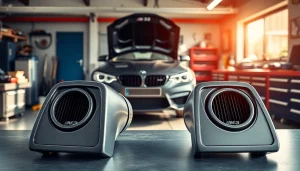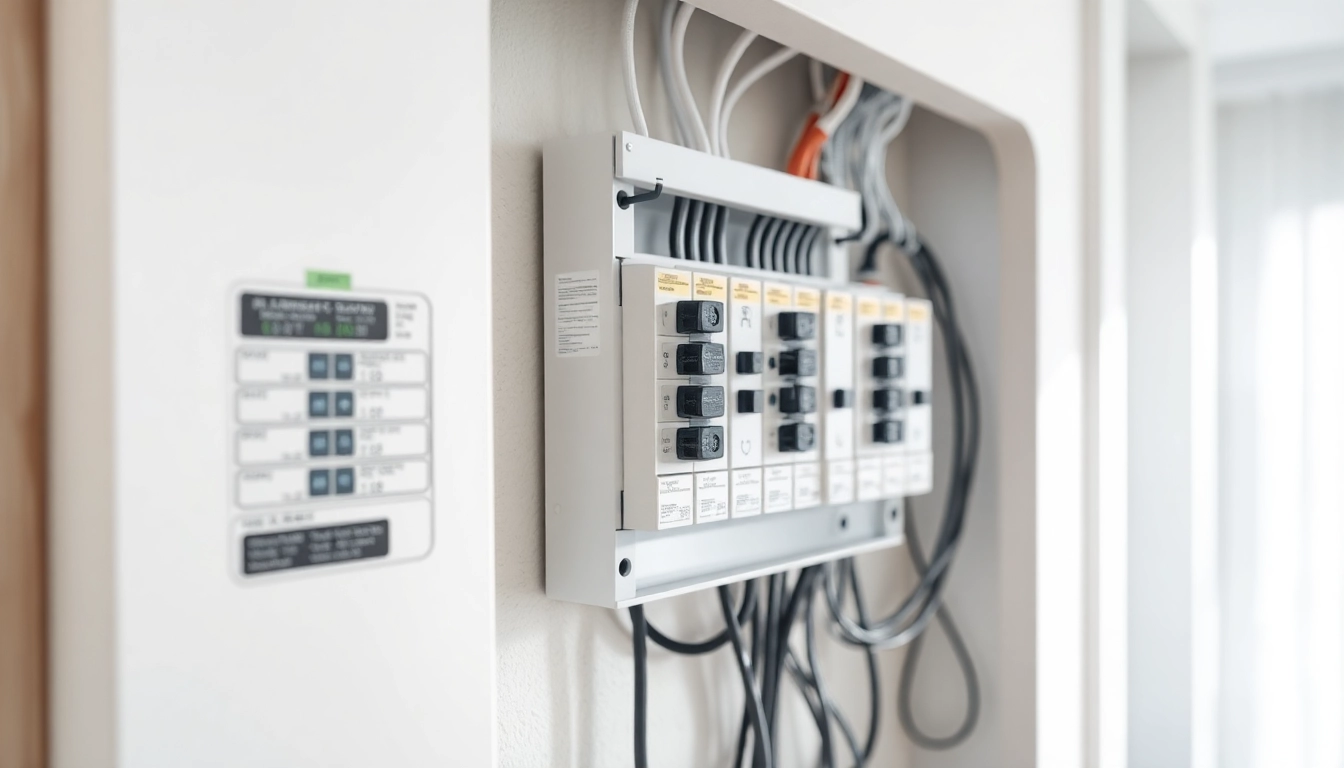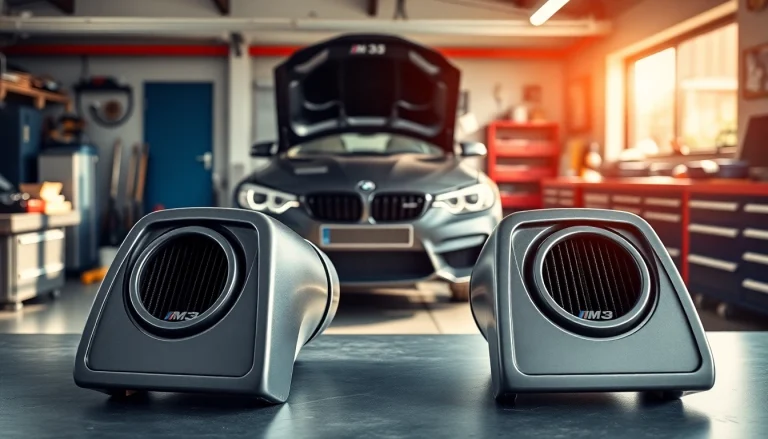Understanding Electrical Panels
An electrical panel, often referred to as a breaker box or distribution board, is an essential part of your electrical system. It serves as the central hub that distributes electricity throughout your home. Understanding how these panels work is vital for homeowners to ensure safety, efficiency, and the ability to meet modern energy demands. This guide will delve into the intricacies of electrical panels, offering insights into their function, signs that indicate an upgrade may be necessary, and best practices for maintenance. If you’re looking to explore when to upgrade your electrical panel, be sure to check out this detailed Electrical Panel resource.
What is an Electrical Panel?
An electrical panel is a metal box that contains circuit breakers or fuses, which protect your home’s electrical circuits from overloads that can lead to fires or damage. It is typically located in a basement, garage, or utility area, functioning as a junction point where electricity is split off into different circuits that power the lights, outlets, and appliances in your home. When power enters your home from the utility company, it first goes to the electrical panel, from which it is then distributed throughout your residence.
Types of Electrical Panels
There are several types of electrical panels used in residential settings, each designed for specific functions and capabilities:
- Breaker Panels: These are the most common type of panel and contain circuit breakers that automatically shut off the power to a circuit if it becomes overloaded.
- Main Panels: A central distribution panel that serves as the main disconnect for all circuits in a home.
- Subpanels: Smaller panels that are connected to the main panel and are used to extend power to areas far from the main panel.
- Smart Panels: Advanced panels equipped with technology to monitor energy usage in real-time and can be controlled remotely via smartphone applications.
Key Components of an Electrical Panel
Understanding the various components within an electrical panel is crucial for recognizing its functionality and potential issues:
- Circuit Breakers: Protect circuits from overload by breaking the connection in case of a fault.
- Main Breaker: A switch that controls the entire electrical supply into the panel.
- Bus Bars: Metal strips that conduct electricity within the panel and connect to circuit breakers.
- Neutral Bus Bar: A bar that provides a connection point for the neutral wires of circuits.
- Ground Bus Bar: Connects all grounding wires away from electrical systems, ensuring safety.
Signs You Need to Upgrade Your Electrical Panel
Identifying when to upgrade your electrical panel can prevent safety issues and ensure efficient power distribution. Here are some common indicators:
Common Indicators of a Failing Panel
There are several clear signs that your electrical panel may be failing or inadequate for your current usage demands:
- Frequent Tripping: If your circuit breakers are frequently tripping, this is a major sign that your panel may not be able to handle the electrical load.
- Utilities Upgrade: If your home has added additional services or larger appliances, such as electric heating or a home office with multiple devices, your panel may need to be upgraded to accommodate these changes.
- Age of the Panel: If your electrical panel is over 25 years old, it may lack the capacity to support modern appliances and fixtures.
- Signs of Damage: Inspect for physical damage, such as burnt or melted wires, rust, or corrosion, as these are crucial indicators of a failing panel.
Efficiency and Energy Demands
As homes become more reliant on electronic devices, from computers to home theaters, energy demands have significantly increased. If you’ve experienced issues with insufficient power supply to your devices or appliances, consider that your electrical panel may not provide adequate circuits or amperage.
Safety Risks Associated with Outdated Panels
Older panels often lack modern safety features and overload protection, making them vulnerable to risks such as electrical fires. Upgrading to a newer model not only enhances power availability but also improves safety by incorporating features like arc fault circuit interrupters (AFCIs) and ground fault circuit interrupters (GFCIs).
How to Choose the Right Electrical Panel
When considering an upgrade, it’s vital to choose the right electrical panel that aligns with your home’s specific needs. Here’s a structured approach to making this decision:
Factors to Consider Before Upgrading
The choice of an electrical panel depends on various aspects:
- Amperage Rating: Most modern homes require panels rated for at least 200 amps, especially if they use high-energy appliances.
- Future Needs: Anticipate future upgrades and expansions to avoid needing another replacement soon.
- Local Codes: Always consult with local building codes that may dictate specific requirements for size and safety standards.
- Brand and Warranty: Opt for trusted brands that offer solid warranties to ensure longevity and reliability.
Comparing Different Types of Electrical Panels
Different types of electrical panels have various functionalities:
- Circuit Breaker Panels: Generally used in homes, providing safety through circuit protection.
- Smart Panels: While they may come with a higher price tag, smart panels offer advanced monitoring features and remote control.
Assess your specific energy usage and lifestyle to determine which type best fits your needs. Consulting with professionals can help clarify what will work best in your situation.
Consulting with a Professional Electrician
Engaging a licensed electrician is crucial not only for the installation process but also for providing invaluable insights into the condition of your electrical system. They can perform audits and suggest whether an upgrade is indeed necessary based on your home’s unique requirements.
The Costs of Upgrading Your Electrical Panel
Understanding the financial implications of upgrading your electrical panel is essential for budget planning. Costs may vary based on several factors:
Budgeting for Your Upgrade
Typical upgrading costs can range from $1,500 to $3,000, depending on factors such as:
- Type of panel being installed
- Current wiring and circuit requirements
- Labor costs in your area
- Additional electrical upgrades or permits required
Long-Term Savings and Efficiency Gains
While the upfront costs of upgrading may seem daunting, consider the long-term benefits. A modern panel can improve energy efficiency and reduce your utility bills, since newer panels distribute power more effectively. Additionally, they may qualify you for energy efficiency incentives offered by utility companies or roofing programs. Investing in a new electrical panel can enhance your property’s value and save money over time.
Financing Options for Homeowners
If paying the total cost upfront is challenging, many financing options are available:
- Home Improvement Loans: These can finance your electrical panel upgrade.
- Credit Cards: Some homeowners use credit for immediate costs if they can manage the repayment.
- Utility Company Programs: Check local availability of assistance programs targeting energy efficiency improvements.
Maintaining Your Electrical Panel
Proper maintenance of your electrical panel will prolong its lifespan and ensure safety. Regular checks and best practices are essential.
Routine Maintenance Checks
Homeowners should regularly inspect their panels for:
- Rust or corrosion on exposed connections
- Frayed wires or loose connections
- Burning smells or unusual heat coming from the panel
Consider scheduling periodic professional inspections to ensure safety and compliance with electrical codes.
Signs That Your Panel Needs Professional Attention
If you identify any of the following symptoms, contact a professional immediately:
- Frequent tripping of breakers
- Burn marks or discoloration around the panel
- Electric shocks or tingles when touching outlets
- Inconsistent or fluctuating power supply
Best Practices for Home Electrical Safety
Implementing best practices ensures safety in your home’s electrical system:
- Label all circuits clearly within your panel for easy identification.
- Ensure accessibility to the panel is clear of clutter.
- Avoid overloading circuits with too many devices.
- Educate family members about the importance of electrical safety and proper usage.
In conclusion, understanding your electrical panel is critical to maintaining the safety and efficiency of your home’s electrical system. Recognizing the signs for potential upgrades, weighing the costs against benefits, and committing to routine maintenance will ensure a reliable and safe electrical supply within your home.






















+ There are no comments
Add yours